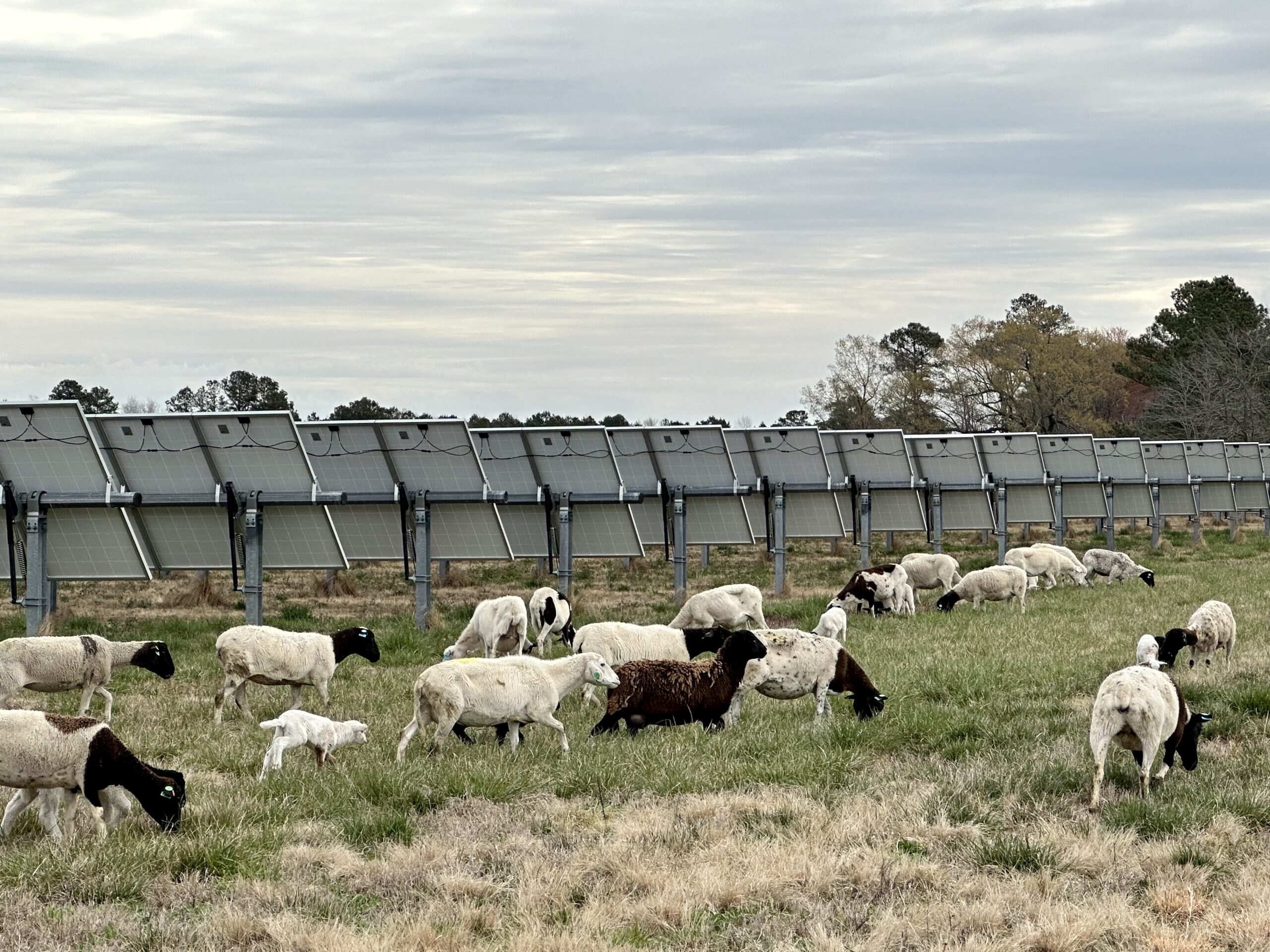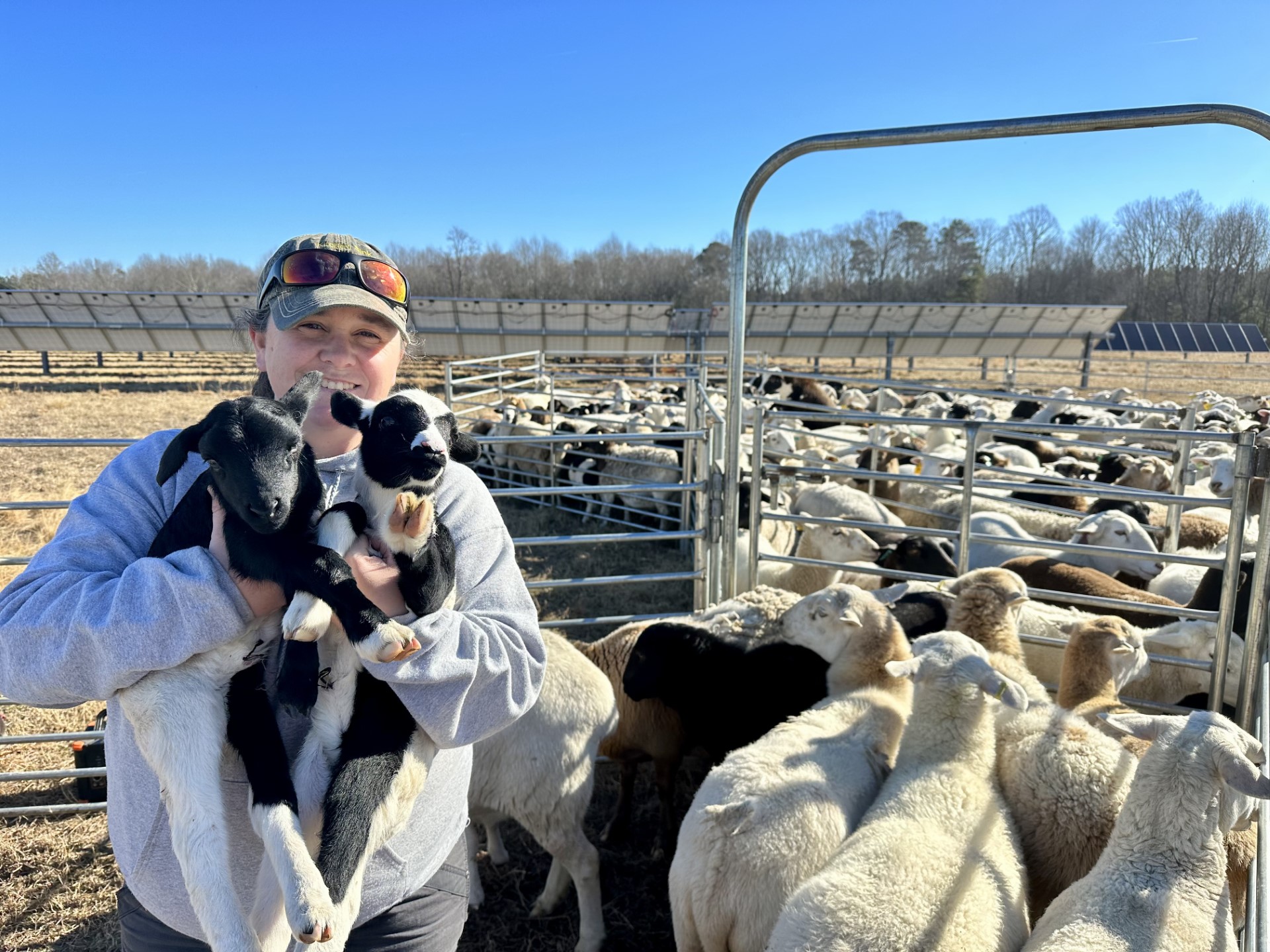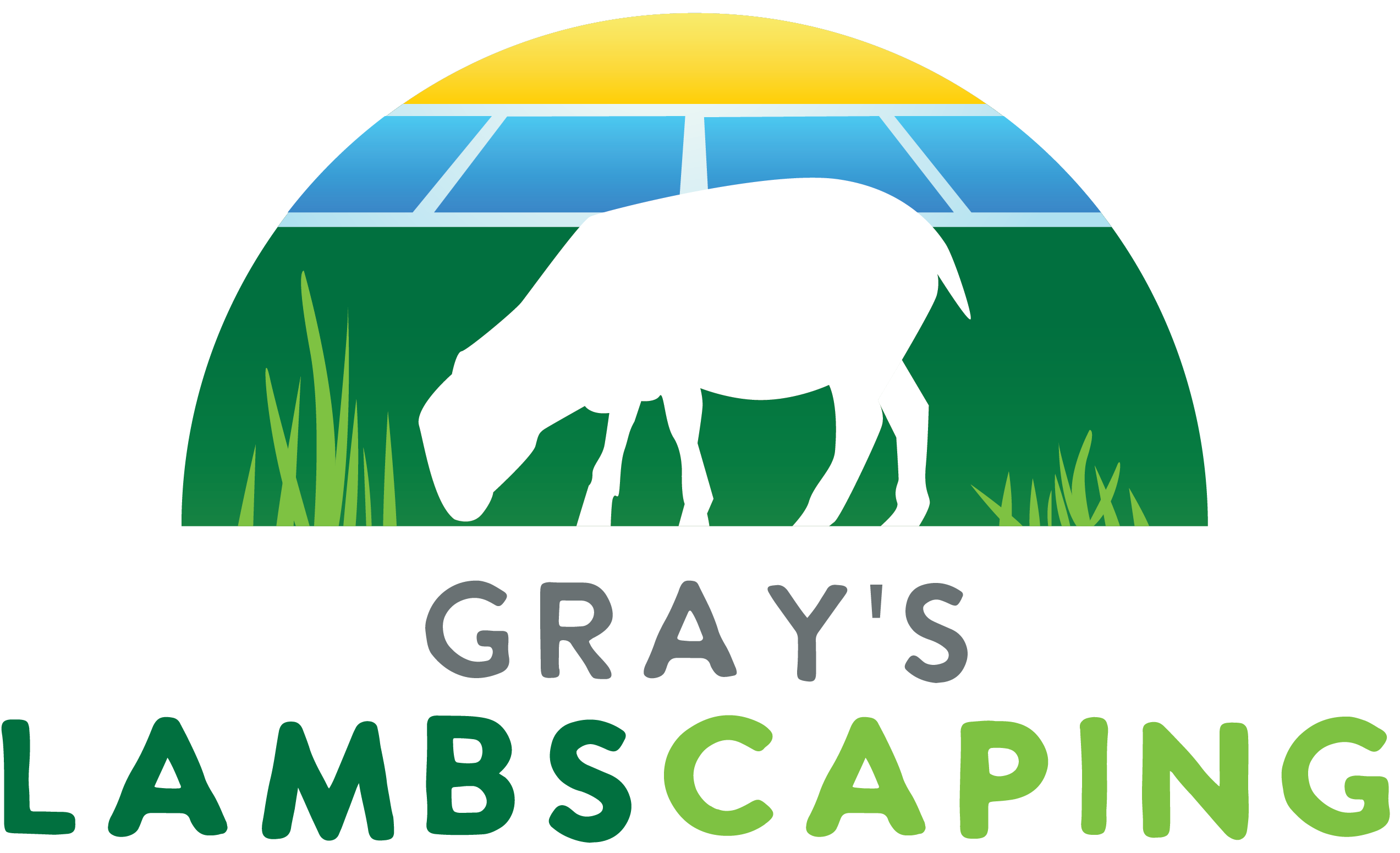Solar Grazing Research and Development
By: Jess Gray · Jan. 1, 2024 · 6 min
Read the latest insights on solar grazing research, detailing its benefits for renewable energy and agriculture, the challenges posed by current regulations, and proposed policy changes to support the integration of livestock grazing on solar farms for sustainable land use and energy production.

A preliminary investigation of the effect of solar panels and rotation frequency on the grazing behavior of sheep (Ovis aries) grazing dormant pasture. Applied Animal Behaviour Science. (2023)
This study, led by California Polytechnic State University researchers, focused on sheep grazing behavior on solar farms to inform management practices. The researchers explored how solar panels affect sheep’s grazing and compared intensive rotational grazing with rotational grazing for vegetation management. Findings indicate that sheep grazed more effectively under solar panels, potentially due to the shelter they provide from elements, and that rotational grazing every four days is more suited for managing vegetation on solar farms given the forage conditions.
Environmental Co-Benefits of Maintaining Native Vegetation With Solar Photovoltaic Infrastructure. Earth’s Future. (2023)
Temple University researchers explored the integration of vegetation with solar photovoltaics at a utility-scale facility, examining its impact on the microclimate, soil properties, and electricity generation. They found that vegetation under solar panels improves soil moisture, temperature regulation, and increases soil carbon and nutrients. However, the benefits to electricity generation from vegetation’s cooling effects depend on local climate and soil conditions. The research highlights the potential of agrivoltaic systems for climate resilience and resource conservation, emphasizing the need for site-specific designs.
Greener sheep: Life cycle analysis of integrated sheep agrivoltaic systems. Cleaner Energy Systems. (2022)
Researchers at Western University analyzed the life cycle of sheep-based agrivoltaic systems, highlighting their superior environmental performance compared to conventional solar photovoltaic and sheep grazing methods. The study emphasizes agrivoltaics’ enhanced land use efficiency and reduced global warming potential, showcasing significant emissions reductions and the potential for substantial expansion of utility-scale PV in the U.S. by integrating sheep grazing. This dual-use approach generates electricity and supports agricultural production, presenting a compelling case for broader adoption to reduce environmental impacts.
One Year of Grassland Vegetation Dynamics in Two Sheep-Grazed Agrivoltaic Systems. Agrivoltaics World Conference. (2022)
Researchers examined the impact of solar panel shading on grassland ecosystems in France, focusing on microclimate changes, vegetation growth, and forage quality under different shading conditions. Findings indicate significant light reduction and cooler soil temperatures under panels, with varied soil moisture responses due to seasonal rainfall and soil texture. Despite reduced light, shaded areas saw faster vegetation growth and improved forage quality, with no significant difference in annual biomass production and species diversity compared to control areas.
Managed sheep grazing can improve soil quality and carbon sequestration at solar photovoltaic sites. AGU 2021 Fall Meeting. (2022)
The study explores the effects of managed sheep grazing on soil properties at six solar PV sites in Minnesota, USA. It found that grazing significantly enhances soil carbon storage (by 10-80%) and nutrient availability, with more frequent grazing yielding greater benefits. Consecutive annual grazing was more beneficial than intermittent grazing. These findings indicate that integrating grazing with solar PV installations can improve soil health and carbon sequestration, offering a sustainable solution for co-locating energy production and agriculture.
Herbage Yield, Lamb Growth and Foraging Behavior in Agrivoltaic Production System. Frontiers in Sustainable Food Systems. (2021)
This study investigates the effects of agrivoltaic systems on lamb growth and pasture production in Oregon. Researchers from Oregon State University compared results from solar pastures with traditional open pastures over two years. They found similar lamb growth rates in both settings, with a notable reduction in herbage mass under solar panels due to shading. However, higher forage quality in solar pastures offset this loss, leading to equivalent lamb production. The study suggests combining sheep grazing and solar energy production could significantly enhance land productivity.
Partial shading by solar panels delays bloom, increases floral abundance during the late-season for pollinators in a dryland, agrivoltaic ecosystem. Nature Scientific Reports. (2021)
Oregon State University researchers explored the effects of solar panels on pollinator-plant communities in agrivoltaic systems. They found that partial shading from solar panels delayed bloom timing and increased floral abundance, potentially benefiting late-season foragers in dryland ecosystems. Pollinator abundance, diversity, and visitation rates were similar in full sun and partial shade, indicating pollinators utilized the habitat under solar arrays despite shade variations. This research suggests that agrivoltaics can support pollinator health and habitat restoration.
Solar PV Power Potential is Greatest Over Croplands. Scientific Reports. (2019)
Oregon State University researchers discovered that croplands have the highest median solar power generation potential, approximately 28 W/m^2. This finding indicates that converting less than 1% of global croplands to agrivoltaic systems could significantly contribute to meeting worldwide energy demands. Such a strategy promises to enhance energy sustainability and offers a solution to the competing demands for land between agricultural and solar power development.
Remarkable agrivoltaic influence on soil moisture, micrometeorology and water-use efficiency. PLOS One. (2018)
Researchers in Oregon found that areas under photovoltaic solar panels maintained higher soil moisture, experienced a significant increase in late-season biomass (90% more biomass), and were significantly more water-efficient (328% more efficient).
Increasing the total productivity of a land by combining mobile photovoltaic panels and food crops. Applied Energy. (2017)
Scientists in France looked into mixing solar panels and crops on the same farm to see if they could grow food and produce energy without using more land. They tested how lettuce grows with solar panels that stay put versus panels that can move to follow the sun in two different ways of moving them. They found that the moving panels create a special area where plants get a mix of sun and shade throughout the day, which actually helps the plants grow bigger leaves and more of them compared to just being in the sun all the time. However, this advantage isn’t as strong when there’s a lot of sun or if the panels let through too much light. But, moving the panels regularly to catch the sun better can make more electricity and help plants grow better by getting the right amount of light. The result is that farms using moving solar panels can make more energy and grow crops just as well, if not better, than traditional farming methods that only focus on getting as much sun as possible.
Solar park microclimate and vegetation management effects on grassland carbon cycling. Environmental Research Letters. (2016)
The researchers found that solar panels can make the ground cooler and drier in summer but warmer in winter compared to areas without panels. This affects plants’ growth, leading to less variety and lower amounts of plant life under the panels. Due to these conditions, they also discovered changes in how much carbon the grassland can store or release, especially in spring and winter. This research helps us understand that while solar parks are good for producing clean energy, we must think carefully about where we put them and how we manage the land to keep it healthy for plants and the environment.
About Jess
Jess Gray is the CEO of Gray’s LAMBscaping, LLC, overseeing the company’s financial management, policy development, logistics, and reporting. As a 2023 Nuffield International Agricultural Scholar, Gray has represented her company in over half a dozen countries, focusing her research on integrating solar energy with livestock grazing.



